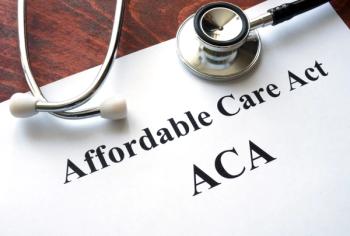
New Drug Entry Versus Existing Product Inflation: What's Driving Rising US Drug Costs?
While rising costs of brand-name drugs are largely a result of existing drug price inflation, rising costs of specialty drugs and generics are mostly driven by new product entry.
There’s widespread agreement that rising drug costs are a pressing healthcare issue that needs to be addressed, but there’s less agreement surrounding the driving force behind these rising costs. While the cost of new, specialty drugs are often pointed to, a new study published in Health Affairs has determined that inflation on existing drugs plays an important role, as well.
The study researchers used pricing data from First Databank and pharmacy claims data from UMPC Health Plan from 2008 to 2016. During the period, the number of National Drug Codes included in the study sample increased from 11,201 to 24,825 for oral drugs and from 1708 to 3047 for injectable drugs, and average weighted costs increased for all drug classes.
Despite few new blockbuster drugs entering the market, the average costs of oral and injectable brand-name drugs increased an average of 9.2% and 15.1%, respectively, each year of the study period. Inflation on existing drugs accounted for 87.3% of the increases for oral drug costs and 104.3% of increases for injectable drugs, while new drug entrants accounted for 12.7% and —4.3% of oral and injectable drug cost increases, respectively.
According to the authors, these estimates demonstrate the role of existing product price inflation on rising drug costs. “This is particularly important because in the current value-based landscape, increasing drug costs attributable to new products can sometimes be justified on the basis of improved outcomes,” they wrote. “However, rising costs due to inflation do not reflect improved value for patients."
Rising costs of specialty drugs during the period were driven by both inflation on existing drugs and new drugs entering the market, but new drug entry accounted for a larger proportion. Specialty oral drugs saw the largest increases across all drug classes, jumping by 20.6% annually and with new drugs accounting for 71.1% of the increases. According to the researchers, the effect of new drug products was particularly high in 2014 following the approval of Sovaldi (sofosbuvir) and Harvoni (ledipasvir/sofosbuvir) for the treatment of hepatitis C. New drugs entering the market accounted for approximately half (52.4%) of the 12.5% annual increase in costs of injectable specialty drugs.
Rising at a slower rate, costs of oral generics increased by 4.4% annually and costs of injectable generics increased by 7.3% annually­ during the study period. While existing generic drugs had a negative contribution to the annual change in the average weighted costs of generics, new generic products were more expensive than those already on the market and tended to increase the average weighted costs for both oral and injectable drugs. This was not unexpected, explained the researchers, because numerous blockbuster brand-name medications lost patent protection during the study period.
Across all 3 drug classes, costs increased considerably faster than inflation. Even for oral generics, which had the smallest changes, annual increases were more than double the rates of general inflation during the same time period, according to the researchers. With specialty drugs, average costs increased 13 times faster than general inflation.
Reference:
Hernandez I, Good C, Cutler D, Gellad W, Parekh N, Shrank W. The contribution of new product entry versus existing product inflation in the rising costs of drugs [published online January 2019]. Health Aff. doi: 10.1377/hlthaff.2018.05147.
Newsletter
Stay ahead of policy, cost, and value—subscribe to AJMC for expert insights at the intersection of clinical care and health economics.








































